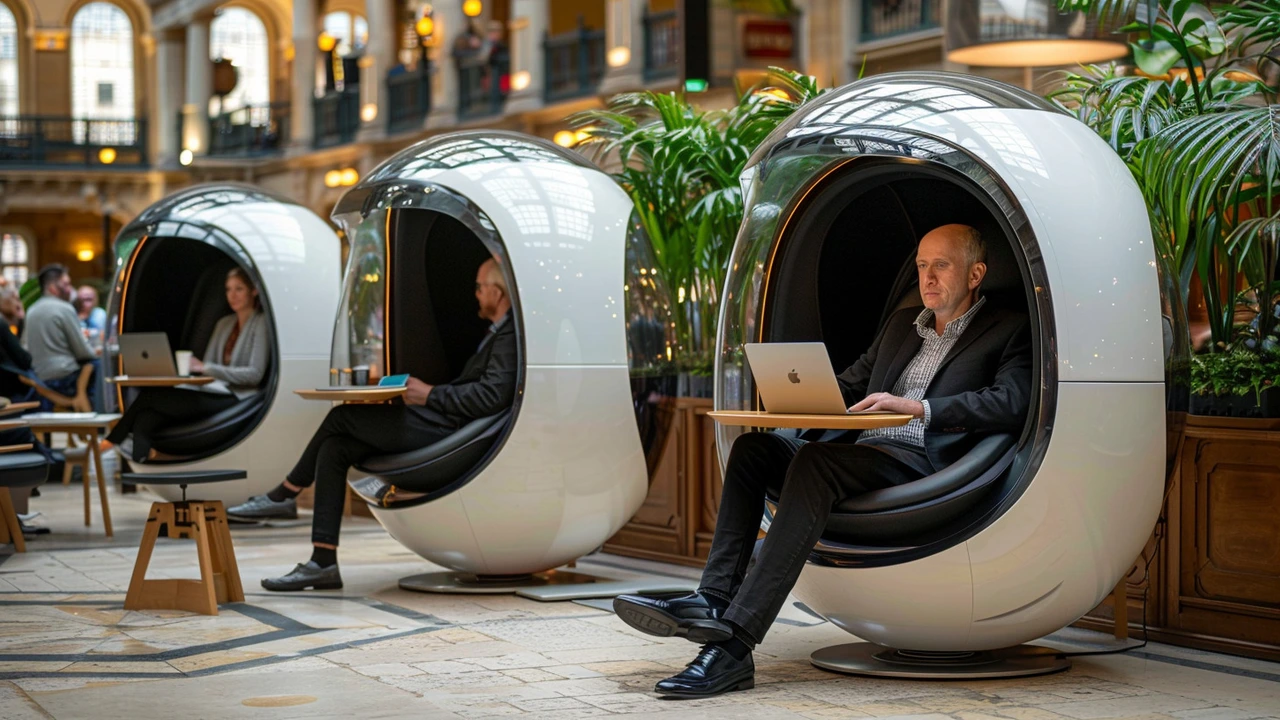
The Rise of Chair Massage in the Workplace
Once considered a luxury, chair massage in the workplace has rapidly evolved into a mainstream wellness initiative acknowledged for its profound benefits on employee health and productivity. With the modern work environment becoming increasingly fast-paced and stress-laden, employers and HR professionals are turning to wellness programs that not only promote physical health but also mental well-being. Enter chair massage – a cost-effective, space-efficient solution that has been shown to remarkably decrease stress and improve job satisfaction among employees. Given that a significant percentage of work-related stress is attributed to long hours spent in front of a computer, it's no wonder chair massage has gained such traction. By providing short, targeted sessions right in the office, companies are witnessing transformative changes in their corporate culture and overall job satisfaction rates.
Moreover, the adoption of chair massage programs is bolstered by compelling research. For instance, a study published in the American Journal of Public Health found that on-site chair massages not only reduced job stress but also decreased anxiety and enhanced alertness. Such findings underscore the tangible benefits that come with incorporating massage into the work setting. But beyond the numbers, what truly makes chair massage a commendable wellness initiative is its accessibility and inclusivity, offering respite to employees across various sectors regardless of their role or seniority level.
Benefits of Chair Massage for Employees and Employers
Delving deeper into the benefits of chair massage, it's not hard to see why this wellness activity is becoming a staple in modern workplaces. For employees, the immediate relief from muscular tension and stress is perhaps the most palpable benefit. Regular sessions have been shown to alleviate symptoms of repetitive strain injuries, a common ailment among office workers. Furthermore, chair massage offers a mental break from the demands of work, fostering a sense of rejuvenation that translates into increased focus and productivity upon returning to their tasks.
Employers, on the other hand, reap their own set of advantages. Increased employee satisfaction and morale lead to decreased turnover rates and a more harmonious workplace environment. Additionally, the visibility of investing in employee well-being enhances the company's image, making it an attractive employer in a competitive job market. Perhaps most compellingly, the productivity gains attributed to reduced stress and improved mental health can significantly impact the bottom line. As put succinctly by a leading wellness expert,
'Investing in employee wellness is not an expense, but an investment in the company's future success.'
Implementing Chair Massage in Your Workplace
Adopting a chair massage program may seem daunting at first, but it's surprisingly simple and scalable. Start by identifying a suitable space within your office that can serve as a massage area – it doesn't have to be large, just private and quiet. Next, engage a professional massage service that specializes in corporate wellness. These providers typically handle all logistics, from scheduling to equipment, making the process seamless for the employer. It's also crucial to communicate the benefits and availability of the massage program to employees, encouraging participation.
Moreover, for a program to be successful, it should be regular and consistent. Offering massages as a one-off event might provide temporary relief, but the real value comes from ongoing, scheduled sessions. This encourages a culture of wellness and shows a sustained commitment to employee health. Feedback from employees can further refine the program, tailoring it to meet the specific needs and preferences of your workforce.
Future Trends in Workplace Wellness and Chair Massage
As we look to the future, the role of chair massage in workplace wellness is set to grow even more significant. With a growing body of research backing its benefits, companies are increasingly recognizing the value of providing on-site wellness services. Advances in technology are also making it easier to book and manage sessions, further increasing accessibility for employees.
Nevertheless, chair massage is just one part of a broader movement towards holistic wellness at work. From mindfulness workshops to flexible working arrangements, employers are adopting a multi-faceted approach to health and well-being. As this trend continues, the workplaces of the future will likely be characterized by a strong emphasis on mental health and work-life balance, with chair massage playing a key role in this evolving ecosystem.




